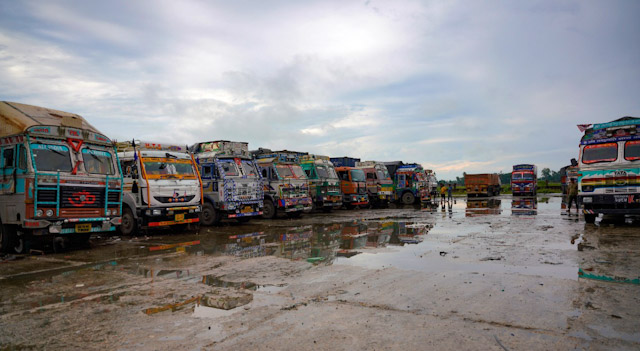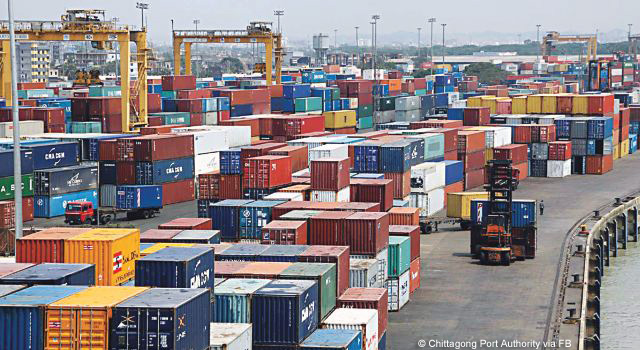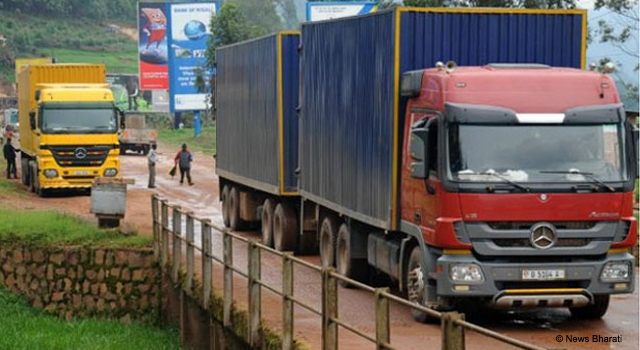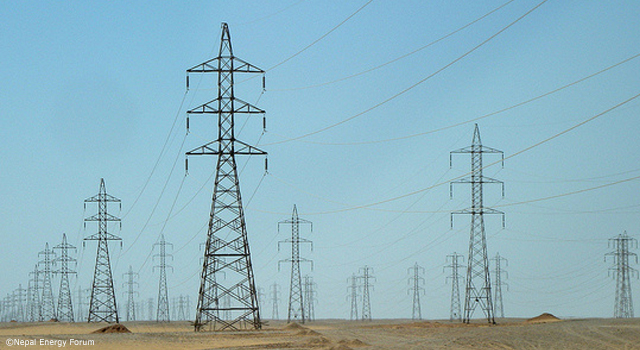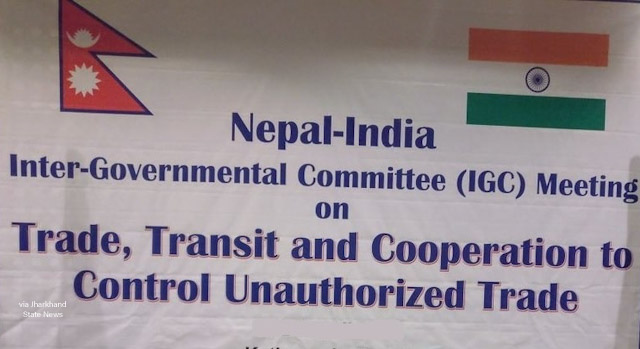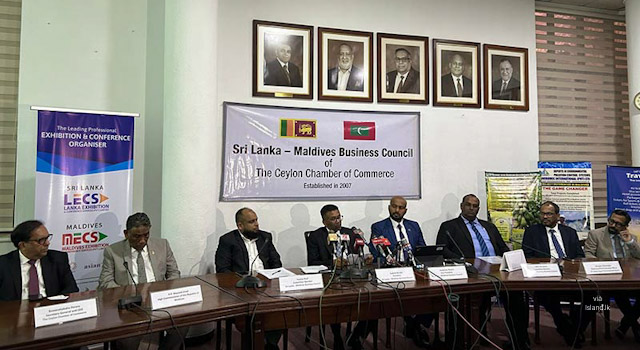
Speech: Increasing Sri Lanka's Export Competitiveness
9 August 2016

Ongoing negotiations for the proposed Sri Lanka-India Economic and Technology Cooperation Agreement (ETCA) are addressing outstanding non-tariff barriers and many of the existing procedural barriers and delays Sri Lankan exporters face in Indian ports of entry. In this speech delivered at the Presidential Export Awards 2016, Mr. Malik Samarawickrama, Sri Lanka Minister of Development Strategies and International Trade, discusses measures included in the Government's economic reform agenda, including ETCA.
Presidential Export Awards 2016 Speech
Mr. Malik Samarawickrama
Today, we are celebrating the excellence of the export community who is the live wire of the national economy and in order to encourage exporters to diversify into new ventures in keeping with the changing international market, I am informed that a few new categories have been introduced to the Presidential Export Awards.
The external environment in which you have to do business today is extremely volatile. Many economies that we are trading with are either slowing down or are pursuing policy reforms which are affecting the demand and competitiveness of products that are being exported by Sri Lanka. Even the emerging markets that we are trying to diversify are either slowing down or static, given the weakening global economy.
Against this background, it is indeed very appropriate that we reward and recognize your efforts in order to encourage and give you confidence that the government is with you and doing the utmost to facilitate your progress.
I would like to very confidently say that with the measures we have introduced, we are looking at long term sustainable development to make Sri Lanka ready to face even the worst challenges of tomorrow and give the opportunity for you to have a level playing field in the global market.
Let me now touch on a few measures of the Unity Government’s economic reform agenda. We are framing outward looking trade and investment policies, which aim to revitalize Sri Lanka’s export competitiveness and integrate the country more closely with the region and the rest of the world.
We are also in the process of implementing a series of reforms to uplift the country’s trade and investment performance. This includes ‘Ease of Doing Business’.
A new Trade Policy Framework is being formulated, which focuses on reducing the anti-export bias in our policies. These reforms are being complemented by improved trade facilitation, which will enable Sri Lanka to capitalize on its strategic geographic location and excellent port facilities to become a distribution and logistics hub.
While internal reforms are undertaken, it is important that we simultaneously look to integrate with the rest of the world to connect and compete to achieve wider market access.
The global trading environment is changing rapidly with global production networks and global and regional value chains. The developments are a result of product fragmentation; cross border dispersion of component production/assembly. Each country specializes in a particular stage of production sequence and trades the value added components which ultimately results in the final product. Product fragmentation were first seen in apparel and electronics and now it has spread to automobiles, electrical machinery, telecommunications, etc.
The factors that have led to product fragmentation is rapid advancement in production technology, technology innovation in communication and transportation and liberalization policy reforms in investment and services.
As all of you are aware, export growth can no longer depend on traditional export markets such as USA and the EU, where demand is slack. Therefore, it is imperative that Sri Lanka finds new markets and carve out preferential market access to them. That is why the government has embarked on a strategy to deepen the exiting FTAs with India and Pakistan and working out new FTAs with growing Asian economies like China and Singapore.
Sri Lanka is currently at a juncture where it could no longer depend on debt-financed development. Thus a viable development strategy that will bring in more foreign exchange to the country is needed via promoting exports and attracting FDIs. For export promotion, FDI will support to enhance the supply capacity of export and make best use of the wider market access gained via FTAs. Making the transition from debt-burdened public investment to a private sector-led export and FDI-based development strategy, remains challenging. But it is the only option available for Sri Lanka at present.
If we look at South Asian countries in the SAARC, Sri Lanka is far behind others in working out duty-free or preferential market access to other countries. In SAARC, Bangladesh, Nepal, Bhutan, Maldives and Afghanistan, by virtue of them being LDCs, qualify for duty-free access to the EU and Indian market. In fact, 84% of SAARC LDC exports have duty-free access to the world at large.
India has preferential market access to ASEAN, Japan, South Korea through various FTAs and CEPAs it has signed during the last decade. Pakistan has FDAs with China, Malaysia and Sri Lanka and benefits from GSP+ in the EU market. In contrast Sri Lanka has access only to India and Pakistan and some preferential access to APTA members, China and Korea for which Bangladesh and India also qualify.
Sri Lanka lags behind even with its South Asian neighbours in having preferential market access to its trading partners. When Sri Lanka’s standing in the global and regional framework is behind others, it becomes, all the more important to sign more Trade Agreements.
The world around us is increasingly moving forward with regional and bilateral Free Trade Agreements, as the multilateral trade liberalization process led by the WTO has come to a standstill. According to the WTO website, there are 419 Regional Trade Agreements. Also 133 of them of them have been now converted into Economic Partnership Agreement (EPA), Comprehensive Economic Partnership Agreement (CEPA) or other forms of deeper Economic Agreements.
These agreements basically deepen and broaden the FTAs with selective reduction of the negative list and incorporating investment and services liberalization. 50% of the global trade now take place through regional or bilateral FTAs.
The Economic and Technology Cooperation Agreement (ETCA) can increase Sri Lanka’s competitiveness in industrial exports and also increase the supply capacity to better utilize the market access to India. In addition, ETCA negotiations are addressing outstanding non-tariff barriers as well as many of the existing procedural barriers and delays in Indian ports of entry.
The intention is to deepen the current Agreement in goods by reducing the negative list on the basis of less than full reciprocity and widen it to include services, investment, technology and training. This will clearly open new opportunities for local and foreign investors to locate in Sri Lanka to access the markets of the fastest growing economy in the world on a preferential basis.
We are also negotiating a new FTA with China and invigorating our existing FTA with Pakistan. Under the China FTA, we are focusing on apparel, tea, gems & jewellery, rubber products, coconut and spices as key industries. We plan to include a priority tariff line for competitive Sri Lankan products that would go into immediate effect on signing of the Agreement.
Sri Lanka’s agreements with Pakistan also provide an opportunity for Indian investors to access that market on a preferential basis by locating in Sri Lanka. We could explore the possibility of re-directing some of the Indo-Pakistan trade currently transmitting through Dubai.
Sri Lanka’s Agreements with India, Pakistan and China will give companies located in Sri Lanka preferential access to a market of around three billion people. This could be our unique selling point (USP).
We have also launched negotiations on a FTA with Singapore. This will open up the entire ASEAN market for Sri Lanka and will create opportunities for hi-tech innovative products to be exported to this region. In addition, possible FTAs with South Korea and Malaysia are in the pipeline.
We are negotiating these agreements with an open mind but with the intention of getting the best possible deal for the country.
We are very confident that GSP+ will be restored in about six months’ time. With BREXIT, a separate agreement will have to be worked out with the UK, which is a destination for about 10% of our exports. I do not see any difficulty in doing so. Also we will be initiating a five-year programme to boost trade and investment with the USA.
In conclusion, I would like to urge this eminent crowd here, the forerunners of the country’s economy, to look beyond the horizon and to join hands with the government to make the necessary and vital changes, not for short-term but for long-term sustainable benefits for you and the people of this country.
Related Links:
- Sri Lanka: Join us to make the necessary and vital changes
- ETCA to address non-tariff, procedural barriers - Minister
- Presidential Export Awards held under patronage of President



